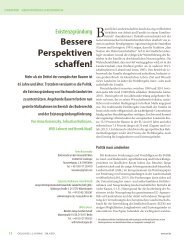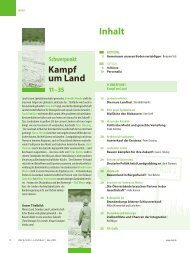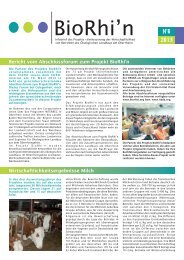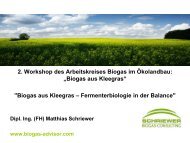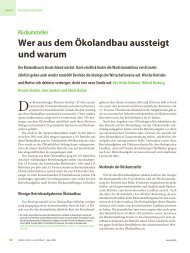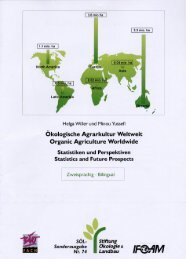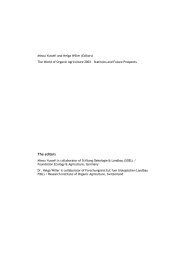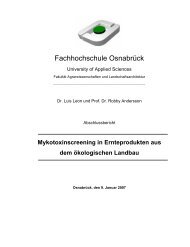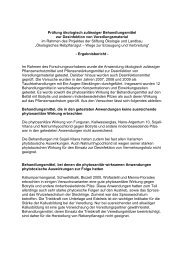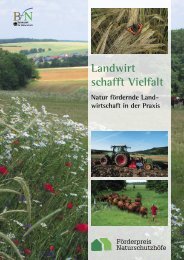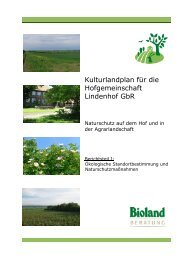the world of organic agriculture - Organic Eprints
the world of organic agriculture - Organic Eprints
the world of organic agriculture - Organic Eprints
Create successful ePaper yourself
Turn your PDF publications into a flip-book with our unique Google optimized e-Paper software.
6 Crop Statistics and Information on four Main Crops<br />
• The collected plants need to be naturally grown;<br />
• The collection area needs to be clearly defined;<br />
• The collection area has not been treated with any prohibited inputs (according to <strong>the</strong><br />
<strong>organic</strong> regulation) and is free <strong>of</strong> major sources <strong>of</strong> contamination;<br />
• The collection is sustainable;<br />
• Full traceability <strong>of</strong> <strong>the</strong> product flow: It needs to be possible to track <strong>the</strong> products back<br />
to <strong>the</strong> area where <strong>the</strong>y were grown.<br />
• All parties involved in <strong>the</strong> collection are bound by contract to following <strong>the</strong> rules <strong>of</strong><br />
<strong>organic</strong> collection<br />
There is no conversion period for wild collection projects as long as <strong>the</strong> requirements for <strong>organic</strong><br />
wild collection are met at <strong>the</strong> first inspection.<br />
According to IFOAM, <strong>the</strong>re is significant trade in “<strong>organic</strong>” wild products, including products<br />
for direct consumption, such as berries, mushrooms and a wide variety <strong>of</strong> herbs. There is<br />
also a growing interest in <strong>organic</strong> wild products by <strong>the</strong> body care medicinal herb sectors. At a<br />
conference, to take place May 3 and 4, 2006 in Bosnia, a wide range <strong>of</strong> issues related to <strong>organic</strong><br />
wild collection 5 will be addressed.<br />
Table 8: Certified <strong>organic</strong> agricultural land and area with wild collection by continent<br />
continent total land under<br />
<strong>organic</strong> management<br />
(ha)<br />
forest and wild<br />
collection<br />
total area: certified<br />
agr.land and<br />
wild collection<br />
Africa 1’025’898 6’752’630 7’778’528<br />
Asia 4‘063‘999 6’420’251 10‘484‘250<br />
Europe 6‘500‘365 550’461 7‘050‘826<br />
Latin America 6‘362‘891 5’950’968 12‘313‘860<br />
North America 1‘377‘800 1’377’799<br />
Oceania 12‘171‘833 12‘171‘833<br />
Total area covered by <strong>the</strong><br />
FiBL survey 2005/2006 31’502’786 19’674’311 51‘177’097<br />
6.1.2 Arable Land by Continent and Crop Category<br />
On a global level, arable land accounts for one quarter <strong>of</strong> <strong>the</strong> <strong>organic</strong> agricultural land for which<br />
information was available. Most <strong>of</strong> <strong>the</strong> <strong>world</strong>’s <strong>organic</strong> arable land is in Europe, followed by North<br />
America and Asia. Details are not available for about one third <strong>of</strong> <strong>the</strong> arable land. Most is used for<br />
cereals, followed by field fodder crops and vegetables.<br />
5 The 1st IFOAM Conference on <strong>Organic</strong> Wild Production. May 3-4, 2006 in Bosnia and Herzegovina, see http://www.<br />
ifoam.org/events/ifoam_conferences/IFOAM_Wild_Conference.html<br />
41



